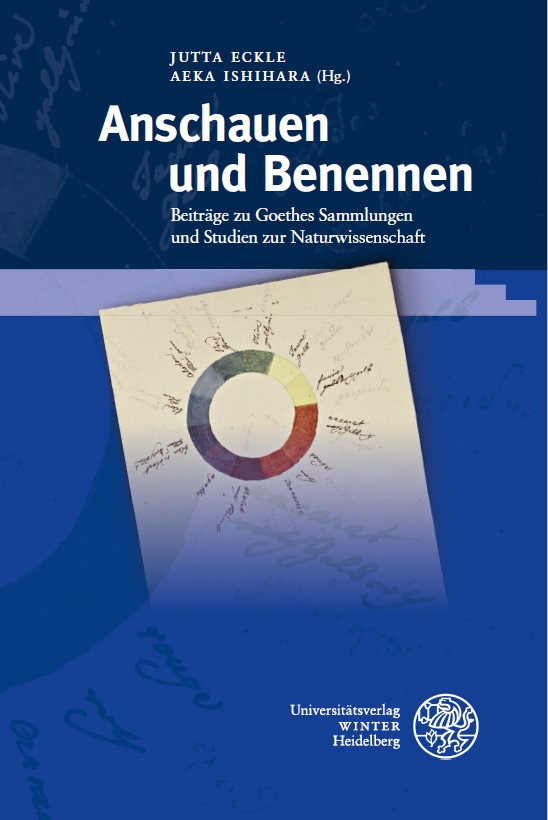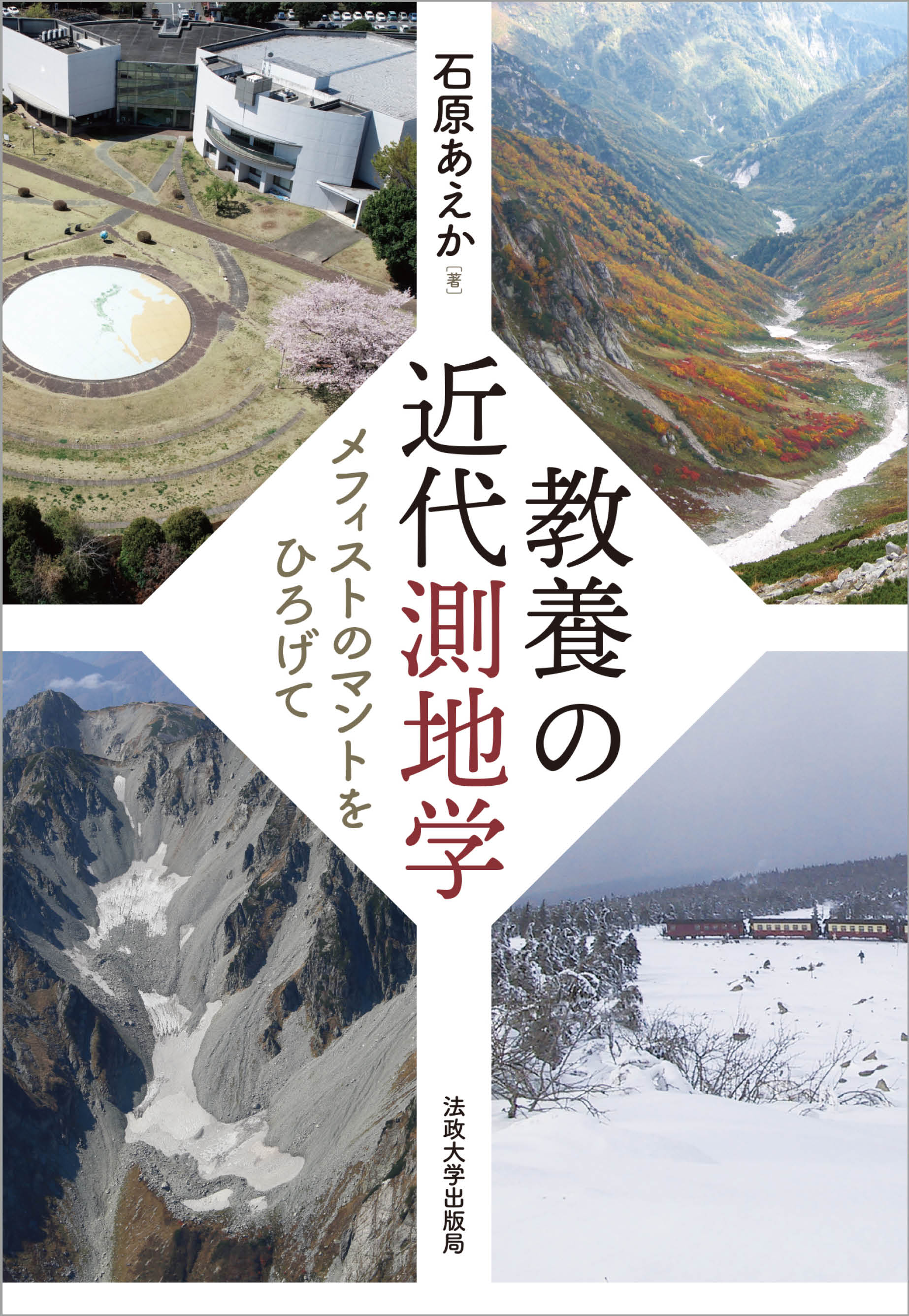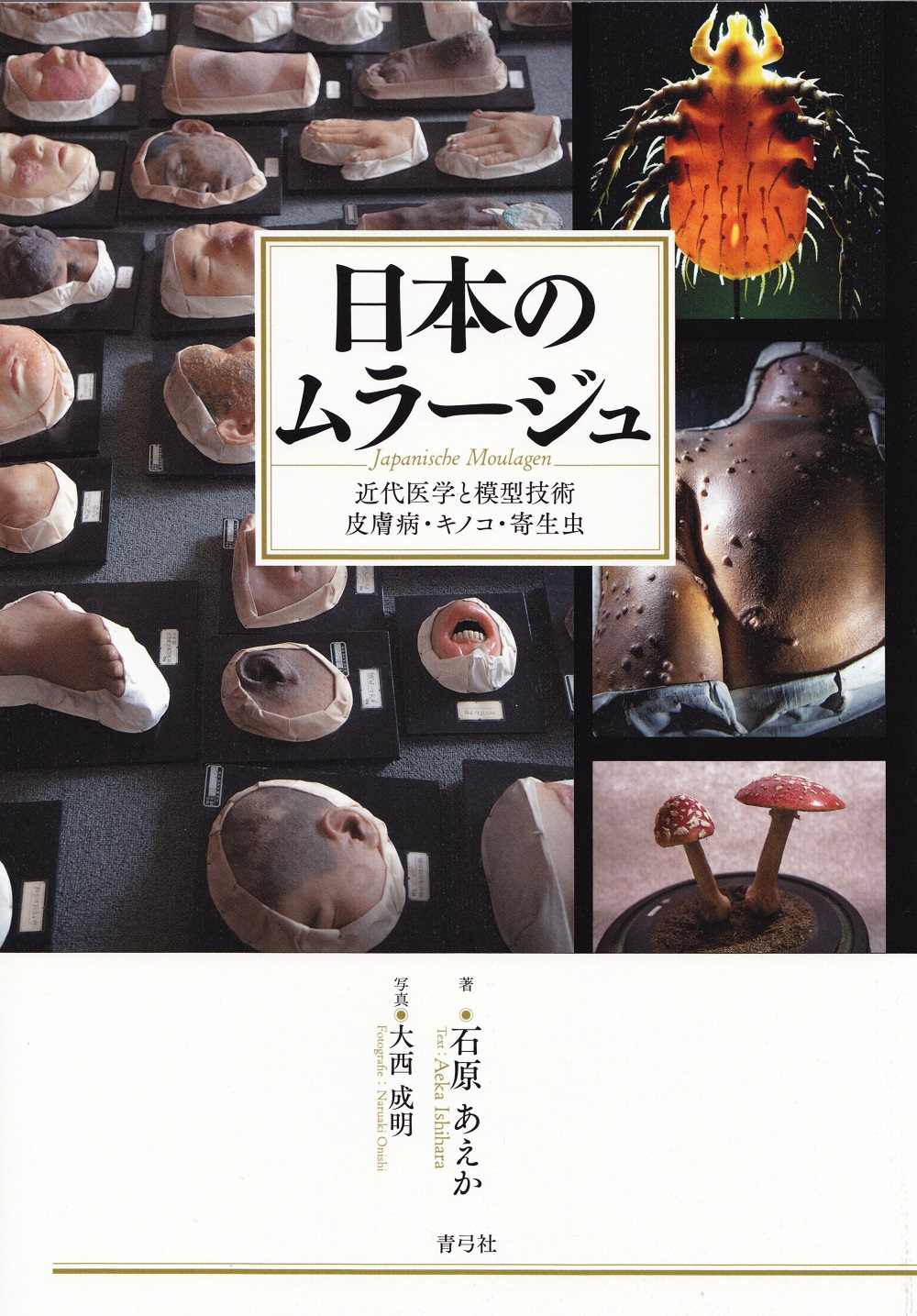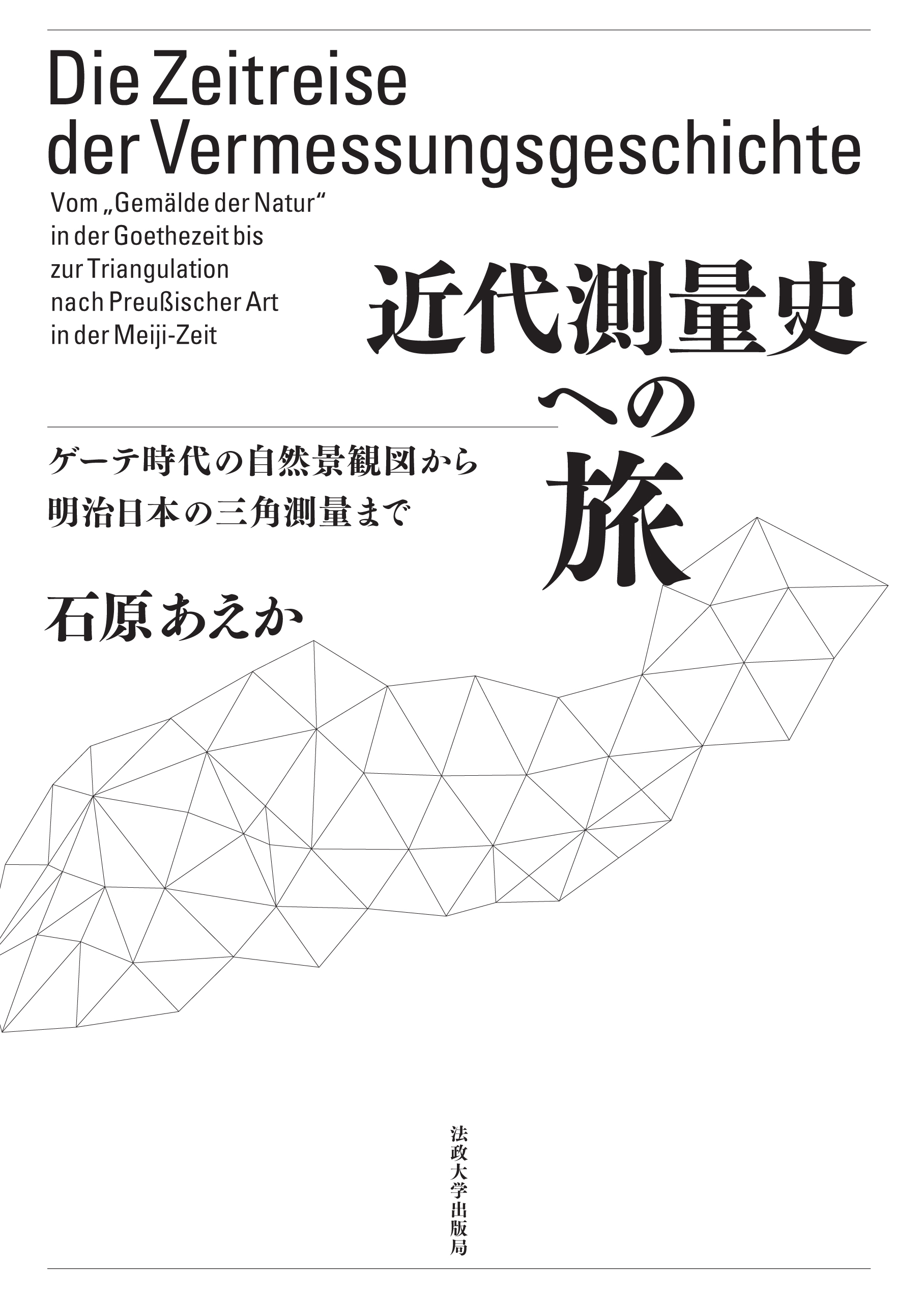
Title
Beiträge zur neueren Literaturgeschichte [Dritte Folge], Volume No.: 426 Anschauen und Benennen (Analysing and Designating) Beiträge zu Goethes Sammlungen und Studien zur Naturwissenschaft (Contributions to Goethe's Collections and Studies on Natural Science)
Size
230 pages, hardcover
Language
Japanese, German
Released
2022
ISBN
978-3-8253-4961-5
Published by
Universitätsverlag Winter
Book Info
See Book Availability at Library
Misc.
Appendix: the table of contents and summary in Japanese
Japanese Page
In the spring of 2020, just as we were celebrating being awarded a Bilateral Collaborations grant (Bilateral Joint Research Seminars FY2020) from the Japan Society for the Promotion of Science (JSPS), our academic activities came under severe restriction due to the spread of COVID-19, dashing our hopes of holding a face-to-face seminar that year. As the purpose of the seminar was the often-neglected exercise of “returning to the starting point” and specifically “to exchange opinions in the presence of the world’s only collection of Goethe’s works on natural science that still exists in Weimar, which cannot be done online,” the principal investigators and editors from Japan and Germany felt that there was no option other than to meet face-to-face. After repeated negotiations and applications for extensions, just before the grant was to end, we were finally granted permission by the Deutsche Forschungsgemeinschaft (DFG) to hold the seminar in a hybrid format. The joint Japan-Germany workshop was scheduled for March 2022 at the Goethe- und Schiller-Archiv in Weimar. Just before I was to start my trip, I was informed that, due to the worsening situation in Ukraine, my flight would be rerouted to avoid Russian airspace and take a southerly route that would increase flight time from less than 11 hours to nearly 15 hours. I remember looking out my window at the unfamiliar view with a sense of wonder. Upon arriving in Frankfurt, I was told that my return flight had been canceled. Despite being plagued by a series of unforeseen circumstances, the trip was well worth it.
Japanese people associate Goethe with “literary giants” and “poets,” but few know that he served as an “elite bureaucrat” who engaged in various fields of natural science. He also wrote papers in the natural sciences, which he compiled into a personal collection that is now being held in a vast public collection in Weimar whose existence is known only to specialists. The seminar was intended to challenge the existing skewed image of Goethe and to appeal the joy and richness of studying Goethe by using the most primary of primary source materials. The seminar featured interesting research presentations using Goethe’s manuscripts and collections that still exist in Weimar and lively discussion on a wide range of topics including natural history, acoustics, color theory, astronomy, and entomology.
However, as Bilateral Collaboration grants do not provide funding for publication, immediately following the seminar, I explored the possibility of publication with Dr. Eckle, the principal investigator on the German side. While she approached several German academic publishers, I prepared and submitted an application to the Alexander von Humboldt-Stiftung for a publication grant. As the COVID-19 pandemic and the situation in Ukraine cast dark shadows over the academic world, in November, I received a reply that a grant would be possible if the book were to be published by the end of 2022 but that no guarantees could be made for a grant the following year or later. With less than two months remaining, it was clear that publication within the year would be impossible; we were, however, able to negotiate an extension of the publication deadline to the end of the fiscal year. Up to completion of the book, while continuing to perform our main duties, which included teaching classes, we took turns reading the manuscript dozens of times, checking for spelling and typographical errors, rechecking sources when necessary, deciding on the cover, coming up with a blurb for promotion, and communicating by email many times a day including with the publisher. The result of these efforts is this book. Despite these challenges, the joint editing process was a rewarding and fruitful experience. For example, while translating the summary of Wyder’s thesis (which is the last chapter of the book) into Japanese, I happened to ask Dr. Kuramochi, director of the Meguro Parasitological Museum in Tokyo, if there was a fixed translation for a certain word. His first response was one of surprise: “I had no idea Goethe observed entomophthorales!” We hope that this book, edited by those of us who are likely to continue studying Goethe, relays to readers the real pleasure of Goethe studies, which involves examining primary sources, and further expands academic exchange with other fields.
(Written by ISHIHARA Aeka, Professor, Graduate School of Arts and Sciences / 2023)
Table of Contents
Inhaltsverzeichnis
Vorwort und Dank
Abhandlungen
1. Jutta Eckle
„Irren heißt, sich in einem Zustande befinden, als wenn das Wahre gar nicht wäre; den Irrthum sich und andern entdecken, heißt rückwärts erfinden“: Zu Goethes anschauendem Erkennen in Reihen in den Maximen und Reflexionen
2. Satoshi Kuwahara
Goethes Italienreise und das Konzept der Kunstkammer
3. Stefan Höppner
Die Welt im Regal: Die materielle Dimension der Natur- wissenschaften in Goethes Bibliothek
4. Héctor Canal
„La Roche Stufen“: Zur Identifizierung und Datierung eines Mineralienverzeichnisses in Goethes Nachlass
5. Hermann Gottschewski
Goethes Schema einer Tonlehre und Eulers Tentamen novae theoriae musicae. Eine Gegenüberstellung zweier „außer- musikalischer“Ansätze zur Musikbetrachtung
6. Hans Esselborn
Goethe beobachtet die Natur, Jean Paul die wissenschaftlichen Diskurse. Unterschiedlicher Umgang zweier Schriftsteller mit der Naturwissenschaft um 1800
7. Haru Hamanaka
Präsenz der Farbe. Materialität des Bildes in Goethes Farbenlehre und Newtons Opticks
8. Sabine Schimma
Die Bewaffnung des Blicks: Auge und Apparatur in Goethes naturwissenschaftlichen Studien
9. Aeka Ishihara
Erscheinungen am Himmel: Der Große Komet 1811 und der Eilfer
10. Margrit Wyder
„Durch Vernichtung zum Leben hineilend“: Goethes Insektenstudien
Allgemeine Siglen
Abbildungen
Anhang: Inhaltsübersicht mit Abstracts in japanischer Sprache
Related Info
Reviewed by Uwe Hentschel (Informationsmittel (IFB), 31.2 [#8564] 2023)
http://informationsmittel-fuer-bibliotheken.de/showfile.php?id=12078



 Find a book
Find a book




